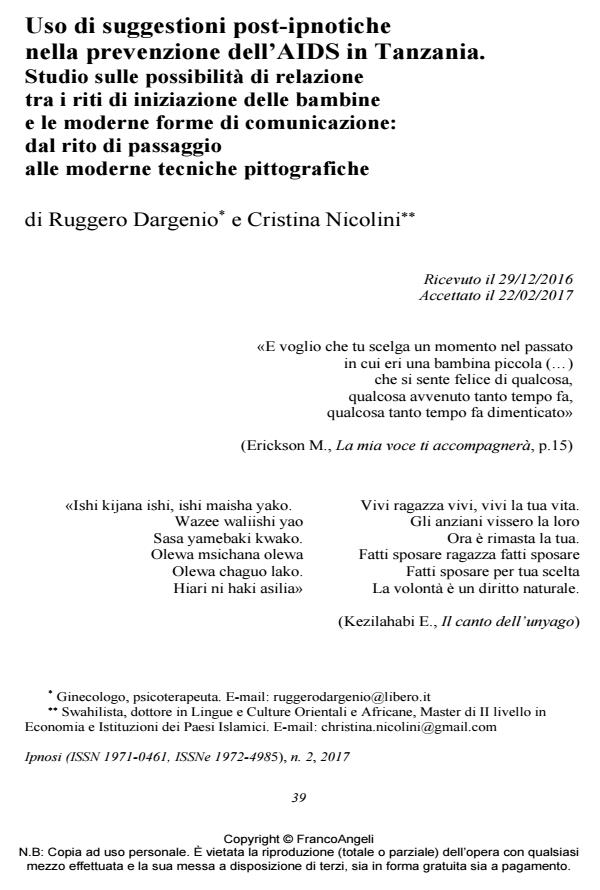The use of post-hypnotic suggestions for Aids prevention in Tanzania. A study on the Possible relations between female initiation rites and modern forms of communication: from the rites of passage to the modern pictographic techniques
Journal title IPNOSI
Author/s Ruggero Dargenio, Cristina Nicolini
Publishing Year 2017 Issue 2017/2
Language Italian Pages 19 P. 39-57 File size 497 KB
DOI 10.3280/IPN2017-002003
DOI is like a bar code for intellectual property: to have more infomation
click here
Below, you can see the article first page
If you want to buy this article in PDF format, you can do it, following the instructions to buy download credits

FrancoAngeli is member of Publishers International Linking Association, Inc (PILA), a not-for-profit association which run the CrossRef service enabling links to and from online scholarly content.
The authors investigate the rites of passage belonging to the Tanzanian tradi-tion, especially the female initiation rite of Unyago, relating them with different forms of modern communication used by international NGOs and local government projects for the prevention of HIV/AIDS. The first objective is to understand the effectiveness of traditional cultural instruments to convey an educational mes-sage to the young Tanzanian women through modality that are able to induce a real trance. The second objective is to highlight, in the forms of contemporary communication, aimed to support the fight against the spread of HIV/AIDS in the country, elements that remind, as true post-hypnotic signals, the suggestions received during the Unyago rite of passage.
Keywords: HIV/AIDS, rites of passage/initiation, pictographic techniques, trance, post-hypnotic suggestions, Tanzania.
Ruggero Dargenio, Cristina Nicolini, Uso di suggestioni post-ipnotiche nella prevenzione dell’AIDS in Tanzania. Studio sulle possibilità di relazione tra i riti di iniziazione delle bambine e le moderne forme di comunicazione: dal rito di passaggio alle moderne tecniche pittografiche in "IPNOSI" 2/2017, pp 39-57, DOI: 10.3280/IPN2017-002003